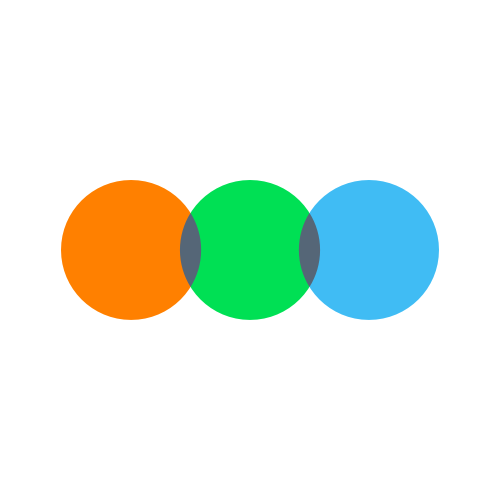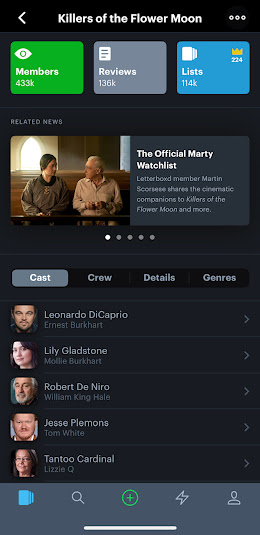Letterboxd is a social media platform geared towards movies. With Letterboxd, a user can create a catalog of every movie they’ve seen, with the options to give each film a “like”, a star rating (from 1 star to 5 stars), or a review. Letterboxd also has a “diary” function, allowing users to keep a running, public log of the films they've seen, as well as the ability to create both public and private lists of films. Users can comment on others’ reviews and follow other users, with the actions of their followed users (diary entries, reviews, and new lists) all appearing in a centralized activity feed. Letterboxd has become increasingly popular with cinephiles worldwide, with roughly 5 million accounts currently active as of September 2023.
In addition to their web interface, Letterboxd also has apps for Android and iOS, the latter of which I will be evaluating for the purpose of this blog post. Below is a screenshot of the app’s home page, which shows 3 rows: one for popular films this week across the whole of Letterboxd, a snapshot of recent activity among your “friends” (the users that you follow), and another row highlighting popular films just among the users you follow.
You can tap posters to go to the detail page for that particular movie. Each film’s detail page provides information on the film’s plotline, cast, crew, release details, your personal rating or activity on that film, your friends’ activity on that film, and the average rating for the film across the Letterboxd community.
Each film crew member has their own separate page, providing overviews of the careers of directors, writers, stars, and so on (with the ability to sort filmographies by date or by popularity). Navigating to a user’s profile will allow you to see their diary, lists, and reviews. The app’s bottom navigation bar allows the following operations (from left to right): the home page, search, “add a film” (which allows you to quickly add a film to your diary), your activity feed, and your personal profile.
As a Letterboxd user, I have always appreciated the slick, utilitarian design of their iOS app. The color scheme is a mixture of white and shades of dark blue, which prevents eye strain. Despite the dense amount of information on each film page, the app divides the film’s information into easily navigable tabs (for cast, crew, details, and genre), and segments the film’s plot information & user activity into well-spaced rows. How individual diaries show on the app is another testament to their economy in design; each entry is divided into its own clearly divided row, with the diary date, the film’s poster and title, and the user’s activity all neatly displayed. Here's a screenshot of a random selection from my own film diary:
“Liked” films are demarcated by a heart icon, reviewed films are demarcated by an icon with four lines (clicking on the entry will direct you to the review), and the star rating is visible on the one film in this screenshot that I gave a star rating. (The icon with two arrows indicates the user had seen the film before, prior to that particular diary entry.) The bottom bar allows for simple navigation across the most commonly used functions, and the app runs quickly and offers smooth scrolling on every individual page (though in my experience, viewing lists with several entries can be slow to load). Overall, the Letterboxd app is indispensable for me as a movie fan and someone who likes to discuss movies & keep up with their friends’ watching habits; its simple yet effective design also no doubt contributes to my frequent usage of the app.
Some recommendations for increased usability I could make would be:





No comments:
Post a Comment